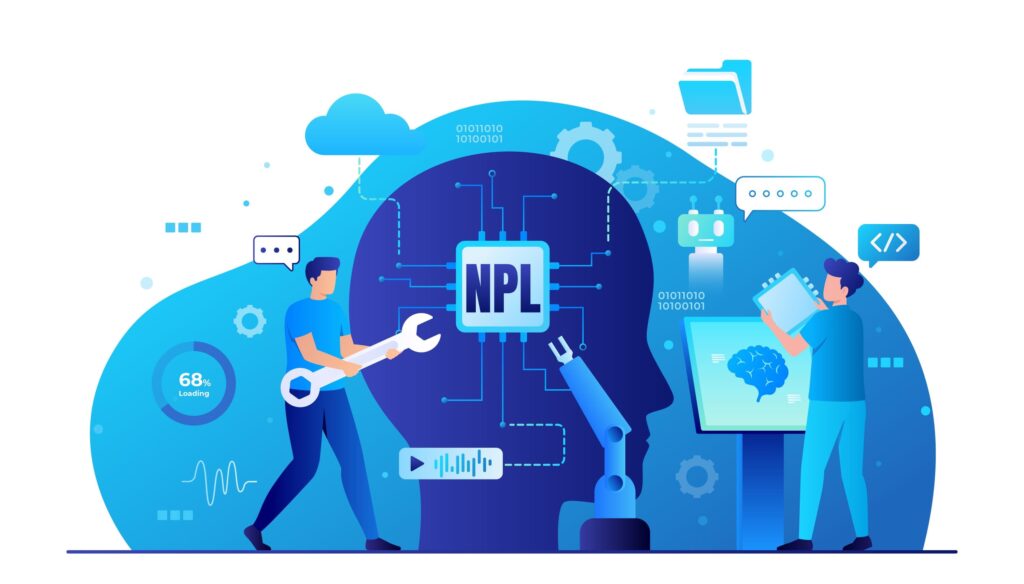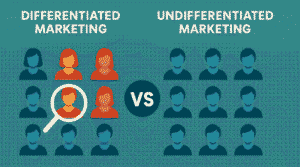Natural Language Processing (NLP) is a fascinating area of computer science, artificial intelligence (AI), and computational linguistics that focuses on enabling machines to interact with humans in a natural, human-like manner. It’s the driving force behind some of the most sophisticated tools and applications we use today, like voice assistants, language translators, and grammar checkers.
This article explores NLP in depth, breaking it down into digestible concepts and exploring its value, applications, challenges, and technical underpinnings.
What is Natural Language Processing (NLP)?
At its core, Natural Language Processing, or NLP, is a subfield of artificial intelligence (AI) that focuses on the interaction between computers and humans through natural language. It’s about teaching machines how to understand, interpret, and respond to the way humans naturally communicate. Think of NLP as the bridge between human language and computer understanding.
In simpler terms, NLP allows machines to read, decipher, and generate human language in a way that’s not only accurate but also contextually relevant. This is a highly complex task, as human language is filled with nuances, idioms, and complexities that can be challenging for machines to process.
The Pillars of NLP
NLP isn’t just one technology; it’s a field that involves several sub-technologies working together. Below are the core areas where NLP operates:
- Speech Recognition: This involves converting spoken language into written text. It’s the technology behind voice assistants like Siri, Google Assistant, and Alexa, as well as voice-to-text applications.
- Text-to-Speech (TTS) and Speech Synthesis: This is the reverse of speech recognition, where machines convert written text into spoken words. TTS is often used in virtual assistants, e-learning platforms, and accessibility tools for the visually impaired.
- Machine Translation: NLP enables machines to translate text from one language to another. Google Translate is one of the most popular examples of NLP technology, which relies on NLP to break down language barriers.
- Text Processing and Summarization: NLP algorithms are used to process unstructured text, extract meaningful information, and even generate summaries of long pieces of text, making it easier for humans to understand large amounts of data.
- Sentiment Analysis: NLP is often used to analyze the sentiment or emotions behind a piece of text, such as whether a product review is positive, negative, or neutral. This has wide applications in customer feedback analysis and social media monitoring.
- Information Retrieval: When we search for something on Google, NLP is at work behind the scenes, analyzing and ranking the most relevant documents based on the language of our query.
In business terms, NLP is a suite of algorithms designed to analyze, extract, and utilize text-based information to derive insights that drive operational benefits. It forms the backbone of many AI-driven processes, giving computers the ability to:
- Understand informal, unstructured queries.
- Extract meaningful insights.
- Generate coherent responses.
- Perform tasks based on natural language input.
The Evolution of NLP
While NLP may seem like a modern technology, it has a long history. The roots of NLP date back to the 1950s when computer scientists began working on ways to make machines understand human language. Over the decades, advancements in AI, machine learning, and computational linguistics have paved the way for more sophisticated NLP models, which are now able to perform tasks like language translation, sentiment analysis, and even generating coherent and contextually relevant text.
Early NLP models were rule-based, relying on predefined sets of rules and patterns to process language. However, today’s NLP systems, particularly those powered by machine learning (ML), use vast amounts of data and sophisticated algorithms to learn from examples. This enables them to improve their understanding and performance over time.
The Global Task of NLP
The overarching goal of NLP is to streamline interactions between humans and machines, making them more conversational and less rigid. Imagine a world where you can simply talk to your devices, and they not only understand you but also provide intelligent, context-aware responses. This is precisely what NLP aims to achieve—enhanced conversational interfaces that:
- Provide insights into the content of the text (What is it about?).
- Explore the context of the message (Why, when, where, and how?).
- Identify opportunities (facts, intents, and sentiments) behind the message.
What Makes NLP Unique?
A key differentiator of NLP compared to traditional computing systems lies in its approach to problem-solving. While conventional systems operate on straightforward “4” IF/THEN logic, NLP dives deeper. It analyzes what a user says or writes to determine what they actually mean—a process that requires understanding context, tone, and even emotions.
This interactive capability is what makes NLP integral to advancements in AI and machine learning (ML). NLP not only deciphers human input but also learns and evolves over time, improving its ability to interpret and respond accurately.
Technical Aspects of NLP
Behind the scenes, NLP involves a combination of algorithms and computational techniques designed to make sense of unstructured language data. The process typically includes:
- Tokenization: Breaking down text into individual words or phrases.
- Part-of-speech tagging: Identifying the grammatical roles of words in a sentence.
- Named entity recognition (NER): Detecting specific entities like names, dates, and locations.
- Parsing: Analyzing sentence structure to understand relationships between words.
- Sentiment analysis: Determining the emotional tone of a message.
- Word Embeddings: Representing words in a vector format to capture semantic meaning.
Why is Natural Language Processing Important?
NLP is a game-changer in the digital era, opening doors to more intuitive and accessible technology. It allows businesses to:
- Enhance Customer Experience: By enabling conversational interfaces, NLP makes interactions more natural and user-friendly.
- Gain Actionable Insights: Through text analysis, NLP helps businesses uncover trends, sentiments, and opportunities hidden in data.
- Automate Processes: From chatbots to automated translation, NLP streamlines workflows and reduces operational costs.
Additionally, NLP plays a crucial role in healthcare, education, and social media, making it a versatile tool for addressing various societal needs.
The Role of NLP in AI and Machine Learning
NLP plays a fundamental role in the broader world of artificial intelligence and machine learning (ML). In fact, NLP is one of the key areas that has seen major advances due to the rise of deep learning and neural networks.
Machine learning models, particularly deep learning algorithms, have made significant strides in helping NLP systems understand language at a deeper level. By training on massive datasets, these models can detect patterns, learn from examples, and improve their performance over time.
For example, when an NLP model is trained on a large dataset of text, it learns the relationship between words, phrases, and sentences, which allows it to generate human-like responses, perform tasks like language translation, and even understand the underlying sentiment behind a piece of text.
NLP in Business: How It’s Transforming Industries
NLP isn’t just a fancy technology used by tech companies; it’s transforming industries across the board. From customer service to healthcare and finance, businesses are leveraging NLP to improve operations, enhance customer experiences, and drive better decision-making.
1. Customer Service: Chatbots and Virtual Assistants
Customer service has been revolutionized by NLP, particularly through the use of chatbots and virtual assistants. These AI-powered tools are capable of engaging in natural conversations with customers, answering questions, providing product recommendations, and even resolving issues without human intervention.
Many companies now use chatbots on their websites and social media channels to provide instant customer support. NLP enables these bots to understand the intent behind customer queries and provide accurate, context-aware responses. With the help of NLP, businesses can provide 24/7 customer service, streamline their operations, and improve customer satisfaction.
2. Healthcare: Improving Patient Care and Record Management
NLP is also making waves in the healthcare industry, where it is being used to analyze electronic health records (EHRs), transcribe medical notes, and even assist in diagnosing medical conditions. By processing vast amounts of medical data, NLP systems can help healthcare professionals make more informed decisions and improve patient outcomes.
For instance, NLP algorithms can analyze clinical texts like physician notes or medical research papers, extracting valuable insights to identify patterns, potential risks, and treatment recommendations.
3. Finance: Fraud Detection and Risk Management
In the finance industry, NLP is used to analyze news articles, social media, and financial reports to identify trends, assess market sentiment, and detect potential risks. Financial institutions use NLP to detect fraud by analyzing transactional data, monitoring customer interactions, and flagging suspicious behavior.
Moreover, NLP-powered algorithms can assist in automating routine tasks such as document processing, allowing financial professionals to focus on more complex tasks.
4. Marketing: Personalization and Audience Insights
NLP is becoming increasingly important in the marketing world, helping brands deliver more personalized content to their audiences. By analyzing customer interactions, reviews, and social media posts, marketers can better understand customer preferences, sentiments, and behaviors.
For example, companies like Netflix use NLP to personalize recommendations based on a user’s past behavior, improving engagement and driving sales.
Challenges and Limitations of NLP
While NLP has made significant strides in recent years, it’s not without its challenges. One of the biggest hurdles is the ambiguity of human language. Words can have multiple meanings depending on the context, and sarcasm or irony can be particularly difficult for machines to interpret.
Another challenge is dealing with unstructured data. Much of the data that NLP systems need to process is messy and unorganized, such as text from social media posts or customer reviews. Cleaning and structuring this data in a way that a machine can understand is a complex task.
Additionally, NLP models require vast amounts of training data to perform well, and obtaining this data can be time-consuming and costly.
The Future of NLP: What’s Next?
The future of NLP looks incredibly promising. As AI and machine learning continue to evolve, we can expect NLP systems to become even more sophisticated, accurate, and capable of handling more complex tasks. Emerging trends include:
- Contextual Understanding: Moving beyond literal meanings to grasp nuanced, context-dependent interpretations.
- Real-Time Translation: Providing seamless, real-time communication across languages.
- Emotion Recognition: Enhancing systems’ ability to detect and respond to emotional cues.
- Ethical AI Development: Ensuring NLP systems are fair, unbiased, and respect privacy.
- Domain-Specific NLP Models: Creating models tailored to specific industries like legal, medical, or financial sectors.
The rise of large language models, like OpenAI’s GPT series, has shown just how far NLP can go in generating human-like text, answering questions, and assisting with a wide range of tasks.
One area where NLP is expected to have a significant impact is in multilingual applications. As businesses become more global, there will be a growing need for machines to seamlessly communicate across different languages and cultures.
Additionally, as NLP continues to improve, we may see even more advanced applications in healthcare, education, and customer service, with AI systems providing real-time translations, personalized learning experiences, and more accurate decision-making.
Conclusion
Natural Language Processing is not just a technological marvel; it’s a bridge to a more connected and intuitive future. By enabling machines to understand and communicate in human language, NLP is reshaping industries and enhancing the way we live and work. From language translation to virtual assistants, the possibilities are endless—and we’ve only scratched the surface.
Whether you’re a business looking to leverage NLP or simply a tech enthusiast, understanding its principles and potential can open up a world of opportunities. So, the next time you ask Alexa a question or use Grammarly to polish your writing, remember the incredible power of NLP at work behind the scenes.
FAQs on NLP
NLP systems are trained on diverse datasets to recognize various forms of language, including slang, regional dialects, and colloquialisms. However, the accuracy of NLP in understanding non-standard language depends on the quality of the training data and the sophistication of the model.
While NLP has made strides in understanding basic sentiment, detecting complex emotions like humor or sarcasm remains a significant challenge. Advanced models, such as those trained with deep learning, are increasingly better at detecting such subtleties, but they still struggle with context-specific nuances.
NLP is increasingly being used to identify and flag fake news by analyzing the credibility of sources, checking for patterns in text that are commonly associated with misinformation, and cross-referencing content with verified databases. However, it requires constant updates and human oversight for effectiveness.
NLP uses machine learning models like neural networks to learn patterns and meanings from large datasets in multiple languages. For tasks like cross-language search, NLP systems analyze the intent behind the query and then map it to relevant data across languages, improving with exposure to diverse linguistic inputs.
NLP uses context-based models like word embeddings and transformer networks (e.g., BERT) to resolve polysemy. These models look at the surrounding words and sentences to determine the most likely meaning of ambiguous words, though challenges remain in cases where context is sparse or unclear.





